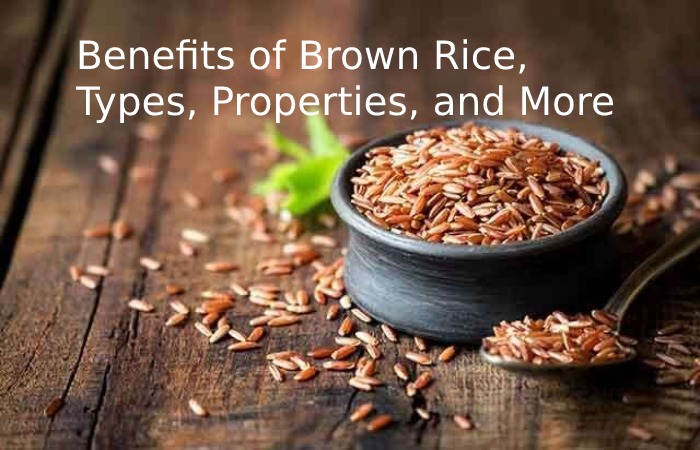Brown Rice These are equal to or more delicious than whites and consumed more recently, such as brown Rice; This has become popular because it is a healthy food with many health benefits.

Rice is one of the most widely consumed foods globally, either because it is a staple of many cultures, is easy to prepare, goes very well with everything, or is simply pleasant for everyone. Still, in all of these cases, the most commonly consumed rice type is white.
Table of Contents
Eat Whole Grains, such as Different types of Brown Rice
It gives away to helps reduce the risk of various chronic diseases, particularly cardiovascular disease, diabetes, and cancer (especially colon cancer) (1). It ultimately linked to a lower risk of overall mortality. According to various studies, Brown Rice is one of the most commonly consumed whole grain products globally. It appears to be a food with a wide range of nutrigenomic effects, such as:
Properties of Brown Rice
The properties of brown Rice seem to be due to its richness in phytochemicals.
They main found in the outermost layer (the bran) and the germ. All of this range of bioactive, antioxidant compounds is naturally found in the germ and bran, containing only the whole grain. White Rice refine to remove germs and bran so that it does not have the valuable components of the grain that are rich in antioxidants.
So which phytochemicals do we find? This whole grain is rich in flavonoids, phenolic acids, and phytosterols.
The richness in phytosterols makes brown Rice an ally against excess cholesterol. In addition, due to its polyphenols with antioxidant effects, it is also delicious food for maintaining our cardiovascular health, as the consumption of foods with antioxidant effects helps prevent cholesterol from oxidizing and sticking to the arteries. Bothering foods with antioxidant properties such as fruits, vegetables, legumes, and whole grains (quinoa, buckwheat, brown Rice, etc.) are best ways to prevent cardiovascular disease as their consumption precludes the formation of atherosclerotic plaques.
On the other hand, it is also rich in lignin’s, phytonutrients with antioxidant effects, and phytoestrogens, which seem to be of great interest due to their prevention of breast (3) and prostate cancer
Micronutrients
As if that weren’t enough, Brown Rice characterize by its content of B vitamins, especially B1. In addition, it describes by its range of tocopherols, magnesium, and selenium. Selenium, found in abundance in brown Rice, is a mineral with a powerful antioxidant that, among other things, repairs DNA and promotes cell apoptosis.
Benefits of Brown Rice
Weightiness Loss
Single of the main profits of Brown Rice then its consumption is that it helps you lose weight. It is a very high fiber food that helps the metabolism work actively and thus can eliminate a more significant amount of calories.
In addition, this variety of Rice creates a more incredible feeling of satiety and prevents you from eating more than necessary and not pinching after hours, meaning with an excellent healthy snack. And also you will have more than enough.
Brown Rice Has A Large Number Of Antioxidants
Consuming It regularly in your healthy diet will help delay the first signs of aging.
In this way, you will also avoid the risk of future diseases such as cancer or Alzheimer’s due. And also to many antioxidants.
Large Fiber Source
For it’s a great source of fiber and added to the body, studies have shown that consuming. And also It regular avoids the risk of colon cancer.
But not only that, it will also help you with the digestive process so that there are no joint problems like constipation or abdominal pain.
Rich In Minerals
Another great benefit of brown Rice lies in its minerals like selenium and manganese; Selenium will help you avoid future heart or joint problems like pain.
Manganese is in control for strengthening the entire nervous system and increasing good chole
